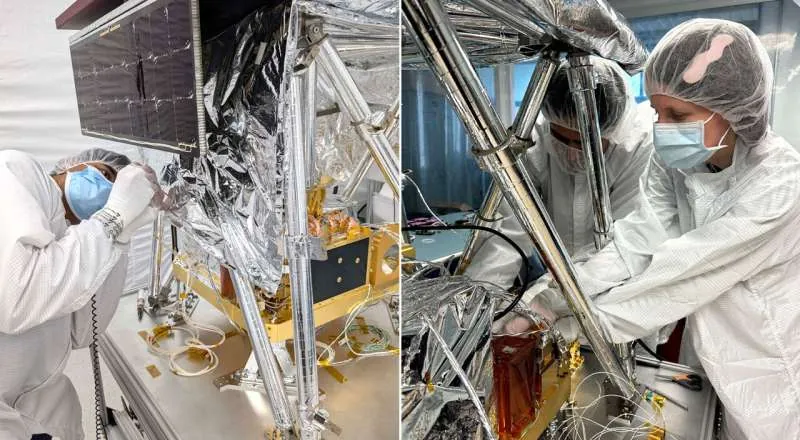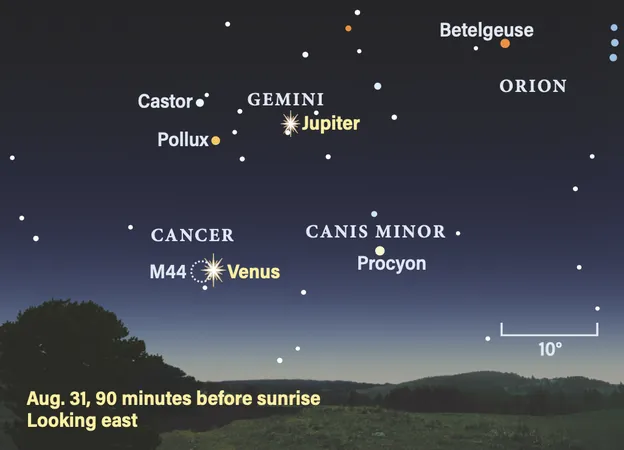
Unlocking Cosmic Secrets: A Revolutionary Lunar Telescope is Set for Testing!
2025-07-29
Author: Ming
Excitement is building as the design and construction phases for the Lunar Surface Electromagnetics Experiment-Night (LuSEE-Night) radio telescope are finally complete! Slated for launch in 2026 aboard a lunar lander, this game-changing telescope aims to explore the far side of the Moon, which offers a pristine environment for cosmic discoveries.
Why the far side, you ask? Unlike any terrestrial telescope, LuSEE-Night will be shielded from the deafening radio frequencies generated by our planet. This unique location will allow scientists to detect the faint signals from the early universe, such as the elusive "Dark Ages" signal that emerges from a time when the universe was just 380,000 years old, long before stars and galaxies formed.
However, this ambitious project faces significant challenges. The lunar surface is not only exposed to extreme radiation but also experiences drastic temperature fluctuations—ranging from a chilling -173°C during the 14-day night to a scorching 173°C during the lunar day. This wild temperature swing means that any solar-powered system needs a robust battery to last through the two-week nights without recharging.
Battery challenges aside, the project has seen notable contributions from renowned institutions. The Lawrence Berkeley National Laboratory spearheaded the antenna design, while UC Berkeley managed thermal systems, and Brookhaven National Laboratory focused on electronics and the crucial spectrometer, which analyzes incoming signals.
Weight constraints also play a pivotal role in the project; LuSEE-Night must not exceed 128 kg to fit within the Blue Ghost lunar lander. Surprisingly, the massive battery alone weighs in at 50 kg, yet the overall design has managed to stay under budget thanks to some off-the-shelf components.
One of the innovative features is the thermal management system, created by UC Berkeley. It employs a sophisticated heat pipe to dissipate solar energy and equipment heat into space, while thermal switches ensure the telescope remains within operational temperature ranges.
LuSEE-Night's primary mission goes beyond simply collecting data; it serves as a landmark technology demonstration. For the first time, researchers aim to prove that a radio telescope can survive and function for an extended duration on the far side of the Moon—targeting a monumental two years of continuous data collection. Achieving this will open the floodgates for even more powerful telescopes, granting us unprecedented access to the universe's ancient secrets.
As the testing phase looms, the scientific community eagerly anticipates what revelations LuSEE-Night will uncover about the cosmos.



 Brasil (PT)
Brasil (PT)
 Canada (EN)
Canada (EN)
 Chile (ES)
Chile (ES)
 Česko (CS)
Česko (CS)
 대한민국 (KO)
대한민국 (KO)
 España (ES)
España (ES)
 France (FR)
France (FR)
 Hong Kong (EN)
Hong Kong (EN)
 Italia (IT)
Italia (IT)
 日本 (JA)
日本 (JA)
 Magyarország (HU)
Magyarország (HU)
 Norge (NO)
Norge (NO)
 Polska (PL)
Polska (PL)
 Schweiz (DE)
Schweiz (DE)
 Singapore (EN)
Singapore (EN)
 Sverige (SV)
Sverige (SV)
 Suomi (FI)
Suomi (FI)
 Türkiye (TR)
Türkiye (TR)
 الإمارات العربية المتحدة (AR)
الإمارات العربية المتحدة (AR)